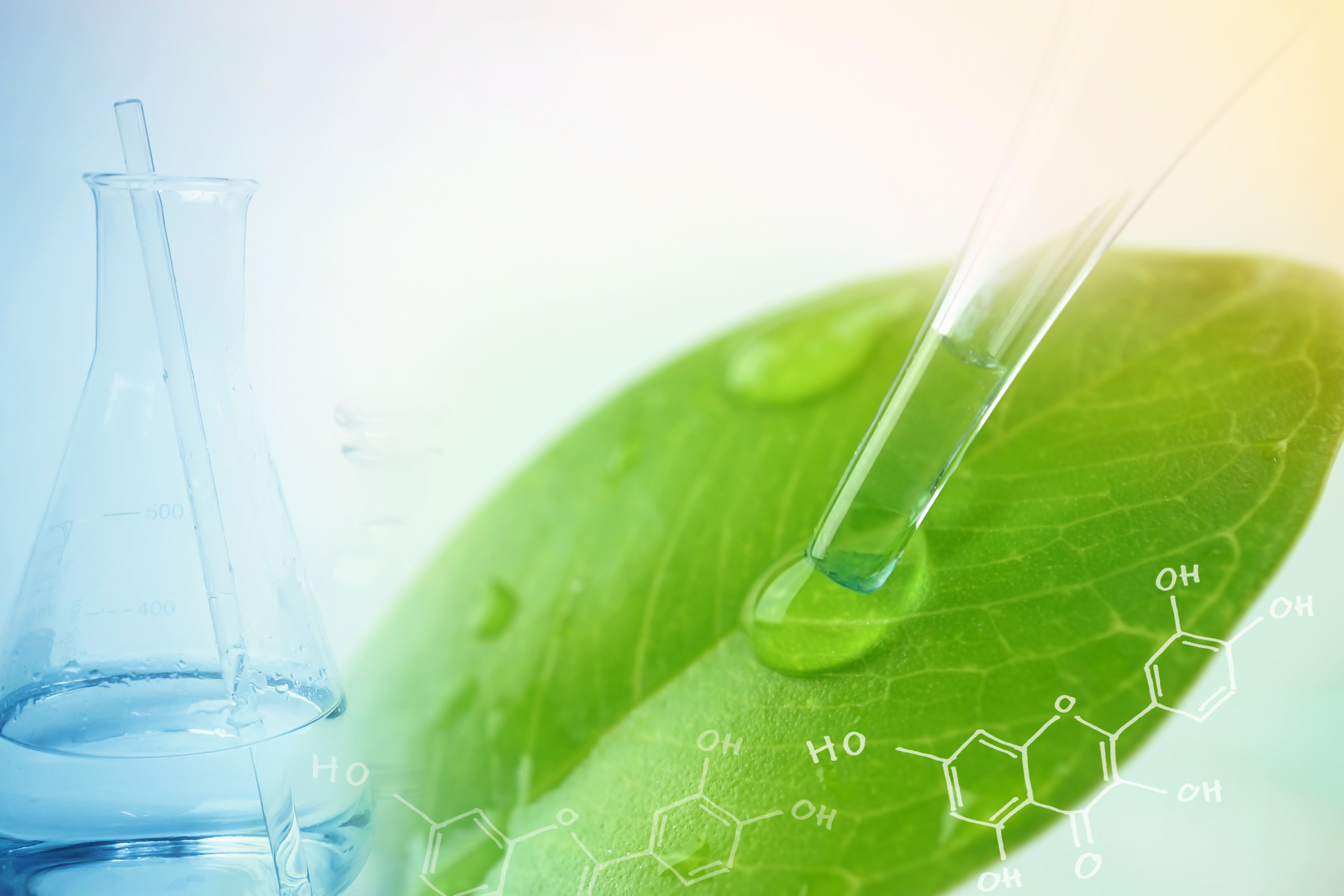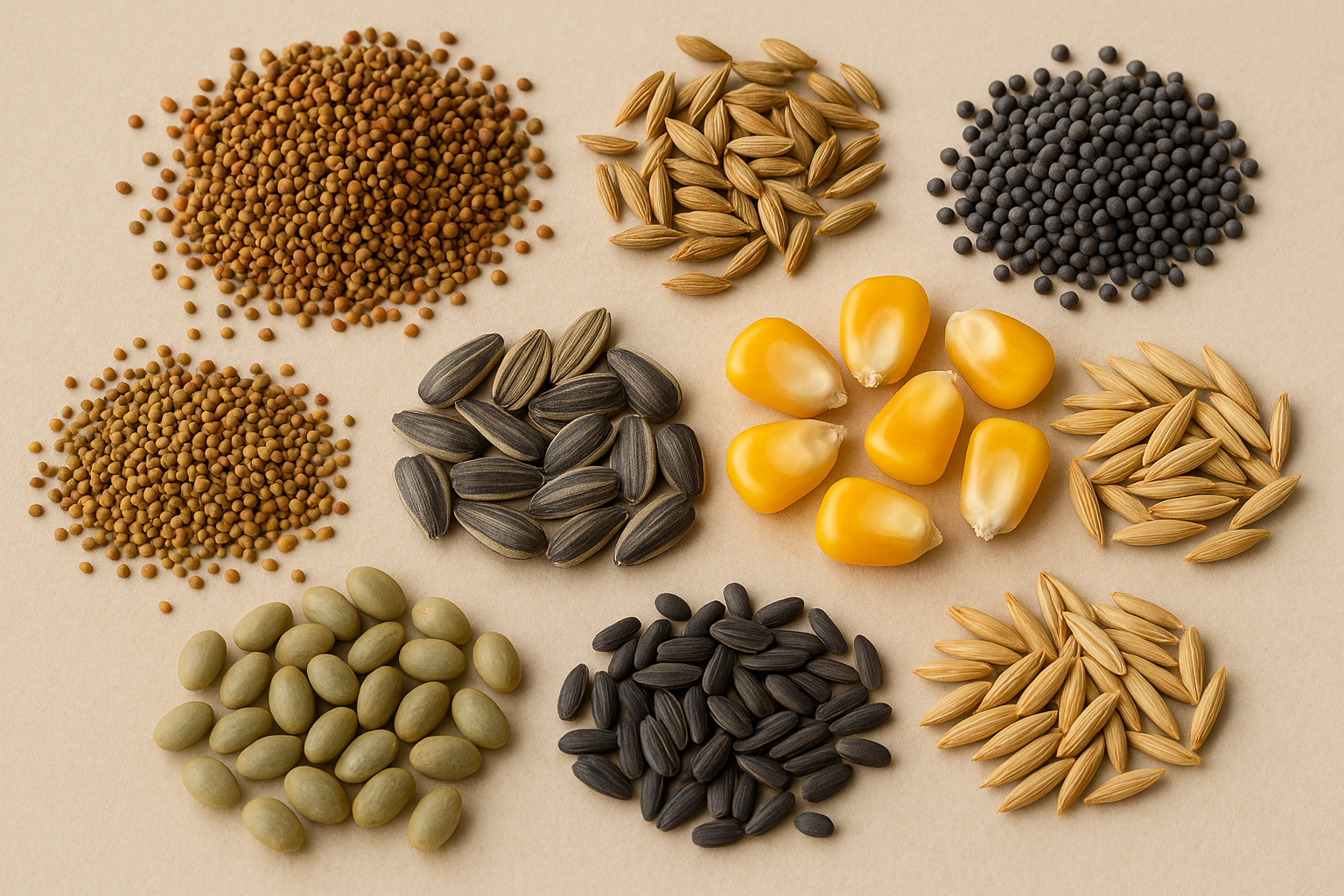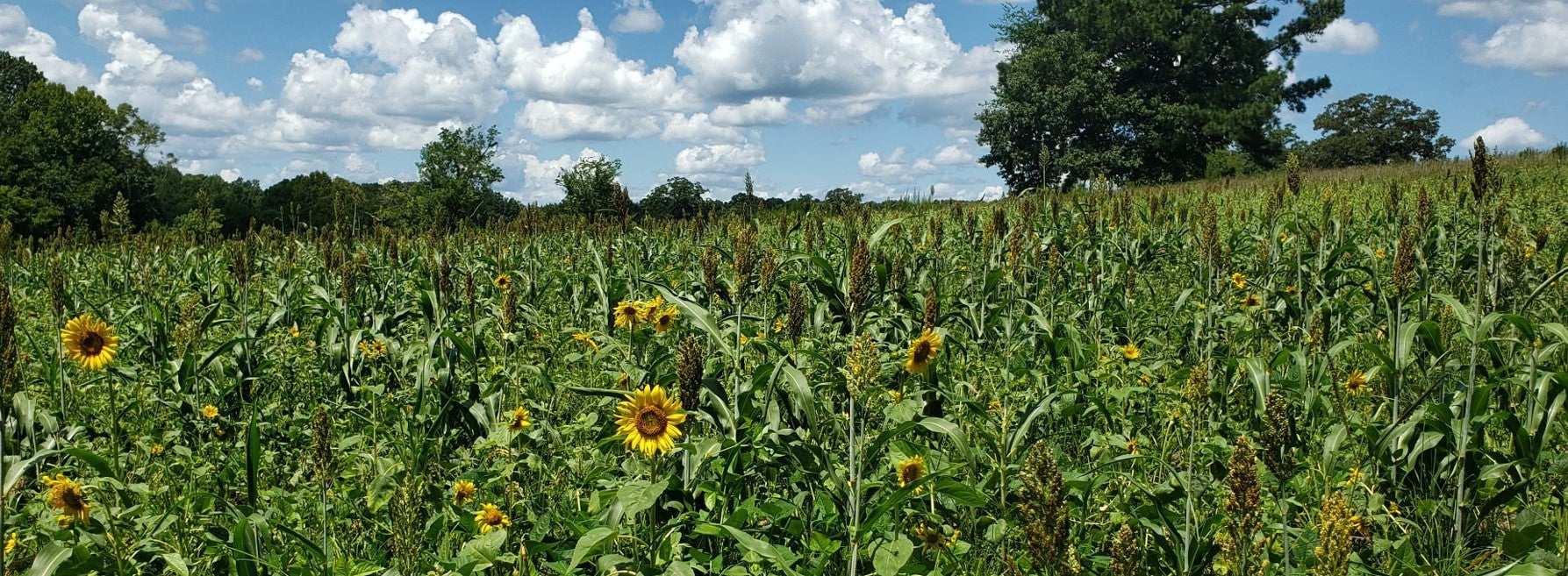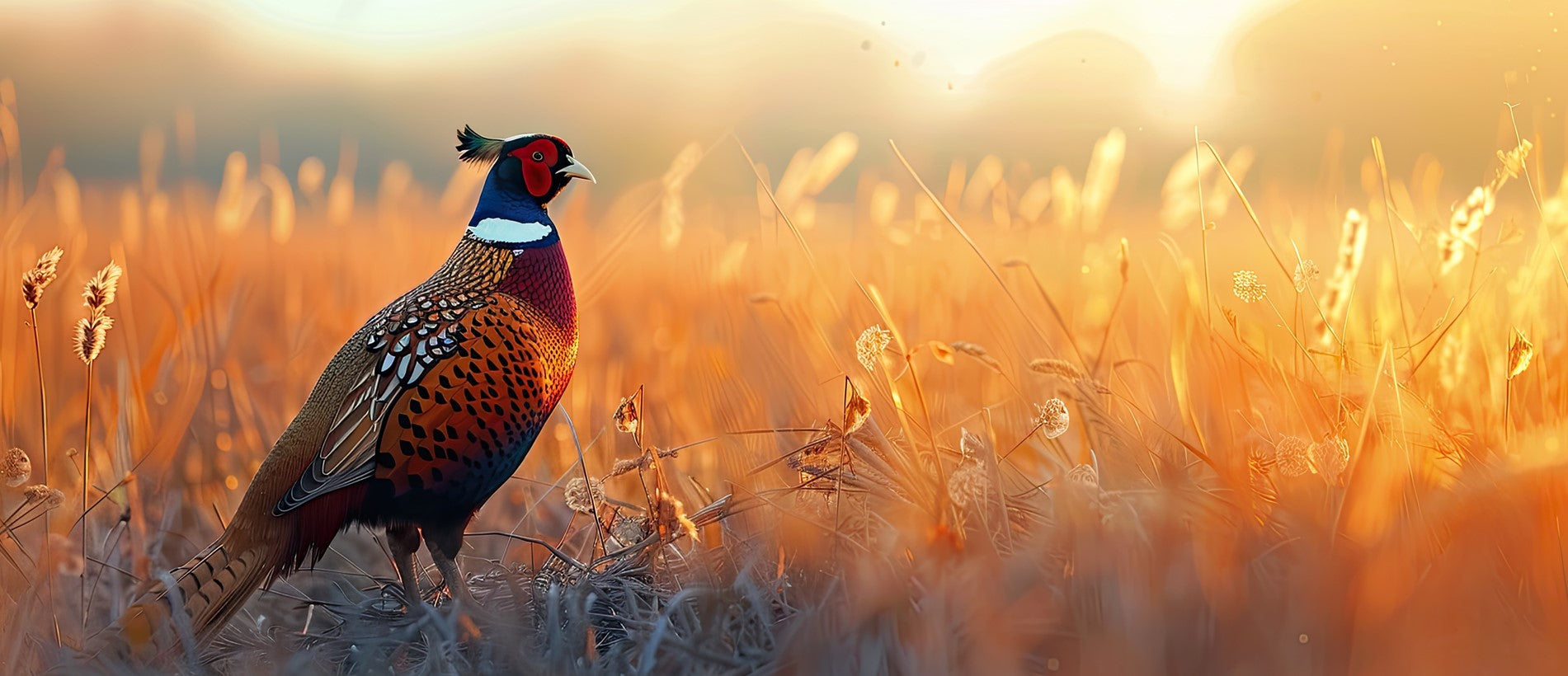Before Planting-
Before planting any of our food plot blends, it is important to kill off all vegetation in the plot area. This creates an area that is free of any weed competition, allowing the seeds get established without fighting other plants for resources. In order to kill all vegetation, I recommend using a glyphosate product. The chemical glyphosate is found labeled under many different trade names, the most popular being “Roundup”. Glyphosate is a non-selective herbicide meaning that it will kill most plants that it comes in contact with. Glyphosate works by absorbing though the leaves of the plant then spreading to all parts, disrupting amino acid production need for growth. It is important to note that glyphosate only affects actively growing plants and does not affect seeds in the soil. After the plot area has been sprayed and killed off, the seed can be no-till drilled in, or the plot area can be disked and planted.
Preemergent herbicides can also be used as a preventative application to keep weeds out of your food plots. Preemergent chemicals are used just as they sound, they are applied to the soil before the weeds germinate and emerge. Thus, with preemergent herbicides, weeds are not sprayed when they are found in the food plot, instead the area is sprayed beforehand to keep the weeds from coming up all together. There are residuals in these chemicals which stay active in the soil and has a residual killing effect on germinating plants for a specific amount of time. These chemicals can be a great tool for food plotters, but it’s important to read the herbicide label to see what crops the specific chemical is approved for and to see how long the residual effects will be on the soil as that may dictate what can be planted in the plot area later on down the road. Some chemicals won’t allow planting of specific crops within a certain time period of the application due to the ability of the chemical to kill of specific germinating seeds.
Weed Control in Fall Annual Plot- This includes our food plot blends: Brassica Banquet, Canola Crave, Greenfield, Max-Attract, Root King Radish, Shake & Rake, Trophy Grazer Oats, Turbo Turnip, Ultra Forage, & Wicked Greens
Weed control in fall annual plots is usually not necessary as long as the food plot area was prepared correctly before planting. There may be some weeds that will show up in the plot, but most will die after the first frost. The weeds should not get to a threshold where they will need chemical control in fall annual plots.
Weed Control in Perennial Plots- This includes our food plot blends: Alfa-Feast, Champion Chicory, King Ladino White Clover, Monster Mix, & Rackup Red Clover.
Weed control is a necessary aspect if you plan to keep your perennial plots lasting for years to come. Spraying onto growing vegetation to kill the weeds that are already in you plot calls for a post emergent herbicide, and a selective herbicide at that. Since you will be spraying onto some foliage that you want to keep but some that you want to kill, it is important to get an herbicide that is selective and only kills the weeds.
To understand what selective chemicals to use on perennial plots, its important to understand two main types of weeds, grass weeds and broadleaf weeds. Grass weeds have leaves that are narrow blades. Common grass weeds would be Crabgrass, Goosegrass, Giant foxtail and so on. Broadleaves, in contrast, are plants where their leaves are not a narrow blade but a more rounded leaf. Examples of common broadleaf weeds are Ragweed, Redroot Pigweed, Pale Smartweed, Cocklebur and this list goes on for miles.

The seeds that are in our perennial mixes such as clovers, chicory, and alfalfa all fall into the broadleaf plant category. With that being said, controlling grass weeds in perennial plots can be accomplished by applying a grass specific herbicide. This herbicide will only target the grass type plants and will not harm the broadleaf plants. One type of grass specific herbicide is Clethodim, which is safe on any of our perennial food plot blends.
Controlling broadleaf weeds in perennial plots can be a little bit trickier but can still definitely be done. All of the plants in our perennial plots are considered broadleaves, so we have to select an herbicide that can kill the broadleaf weeds but not our broadleaf plants that we want to protect. For our King Ladino White Clover and our Rackup Red Clover, we recommend using a 2,4 DB herbicide commonly found labeled as “Butyrac”. This will not harm the clover but can kill many broadleaf weeds. If you have both broadleaf and grass weeds in your clover, do not mix clethodim with 2,4DB in the same tank. Instead, you can either spray the plot in two different applications, one with clethodim then go back later with the 2,4 DB, or you could use Imazamox as a single application.
When chicory is added into the mix with our blends, Monster Mix, Alfa Feast, and Champion Chicory, we suggest using the chemical, Imazamox, which can be found labeled under “Imox” and “Octivio”. The great thing about Imazamox is it can control both grass and broadleaf weeds, but it is important to read the label as the plot will need to be sprayed when the chicory is at a specific crop stage in order for it to not be harmed by the chemical.
It is important to note that I only listed a small selection of chemicals on the market and there are many other chemicals that will work. When using chemical herbicides, it is always important to read the label because it will tell you how to safely use the chemical, what crops it is safe on, what weeds it kills, and what rate to apply the chemical.
Perennial Food Plot Herbicide Flow Chart













What post emergent herbicide would you recommend when planting the upland game bird mix?
We have dutch white, crimson, sainfoin, birdsfoot trefoil, yellow and white sweet clover for in our honey bee pasture along with lots of perennials. Unfortunately we have tons of fleabane, thistle and annual grass weeds. I am looking for what I can spray or use as a preemergent to help control the weeds but not damage the clovers and flowers but most of all our bees. We also have lots of milkweed in the fields.
I have chicory and clover in my plot. Both grasses and broad based weeds are present. What should I use?
Does the clover and chicory need to be at a certain growth stage before spraying?
Hey Mike! There really is no great way to kill grass weeds in an oat plot, but 24Db will be effective for killing any broad leaf weeds in your oat plot.
Great info on herbicides. Haven’t heard of Imazamox. What will kill grasses and broadleaf in forage oats?
Leave a comment